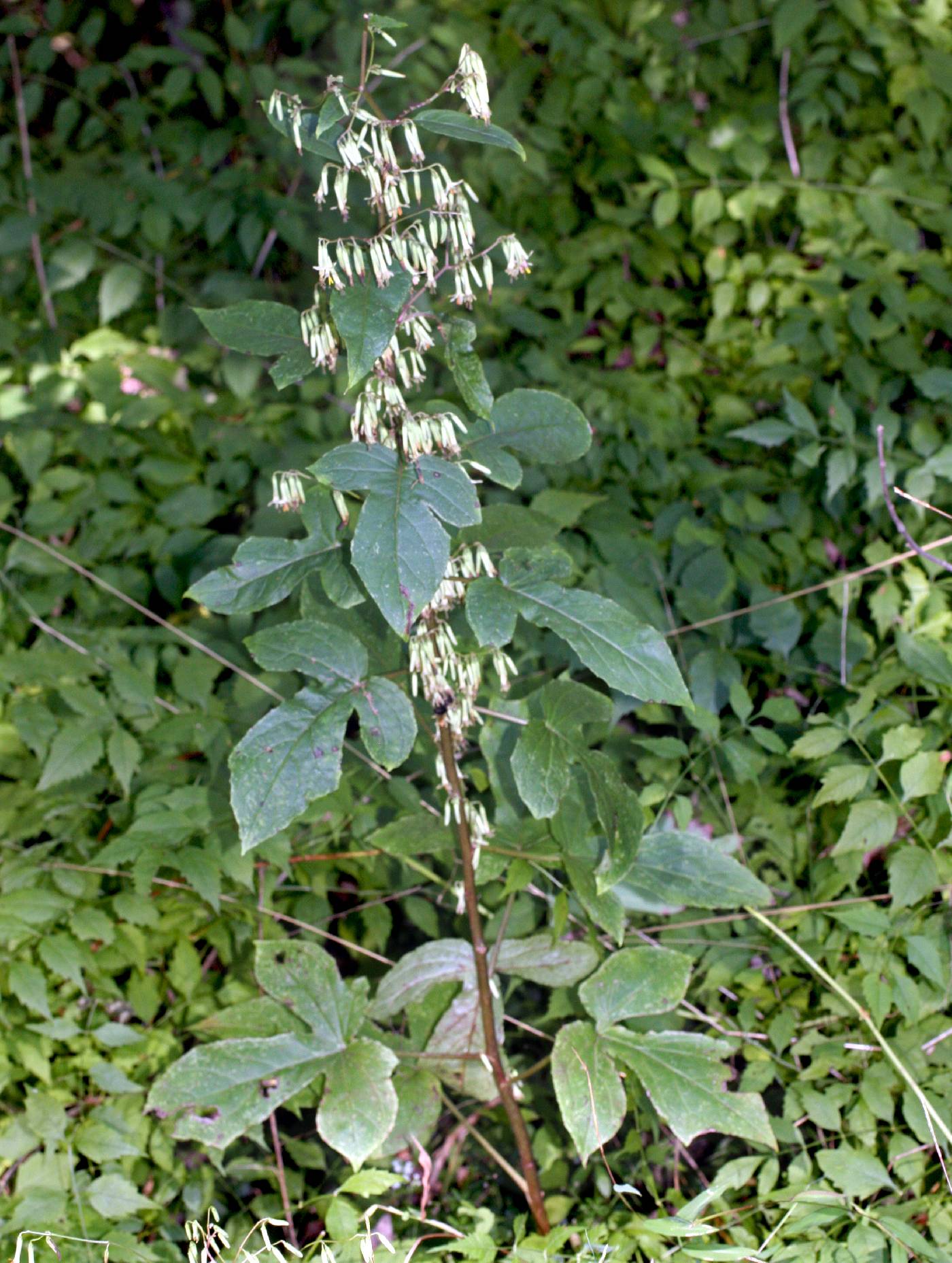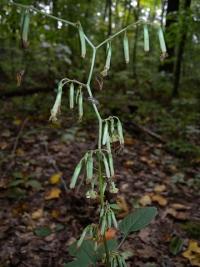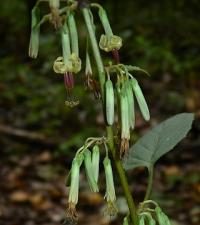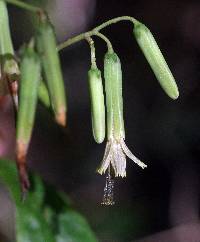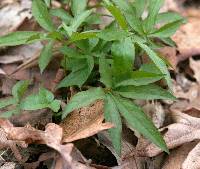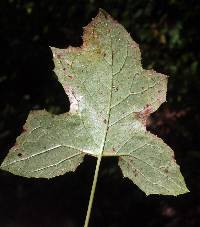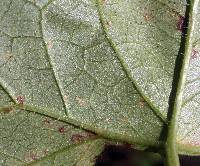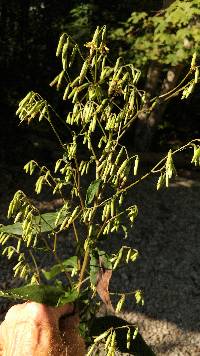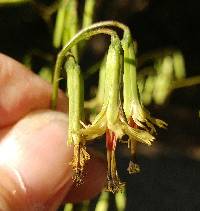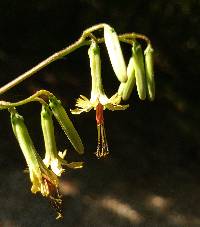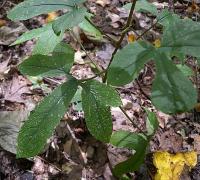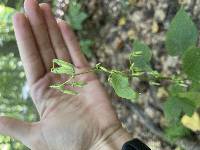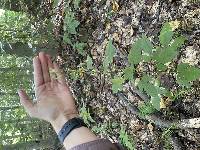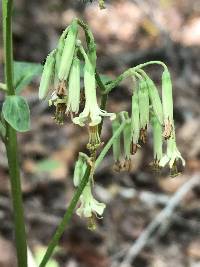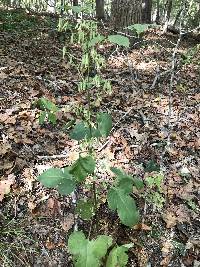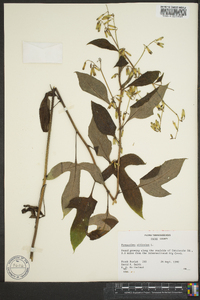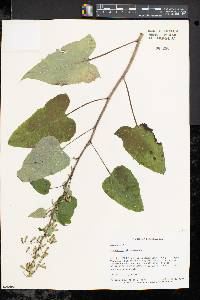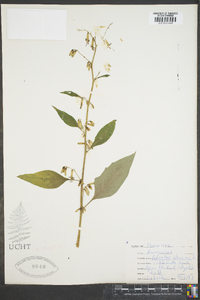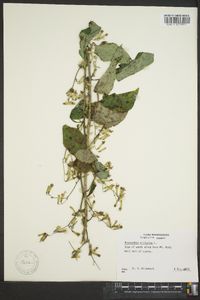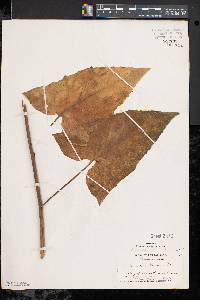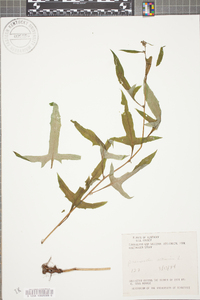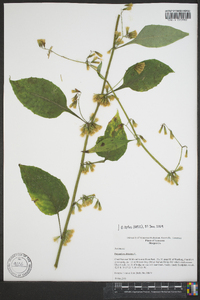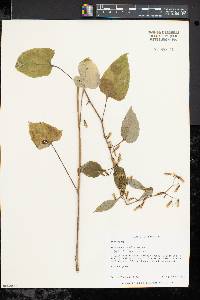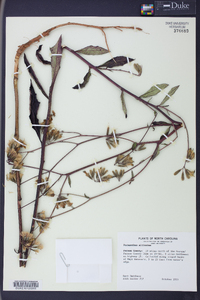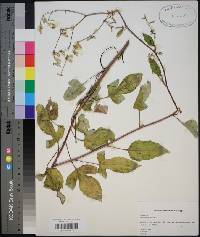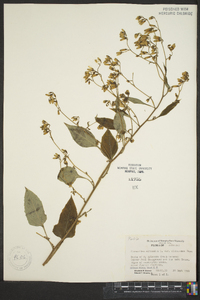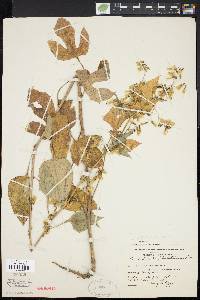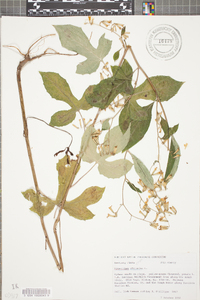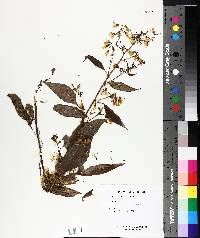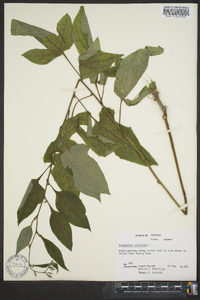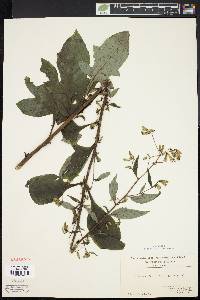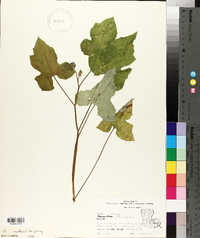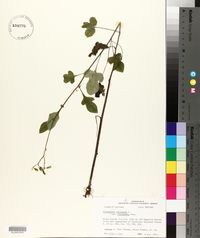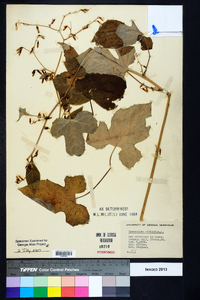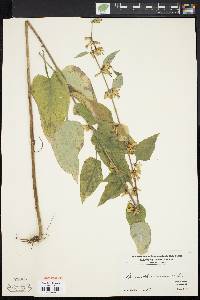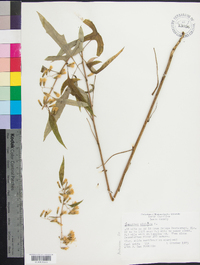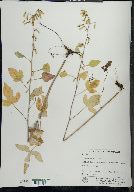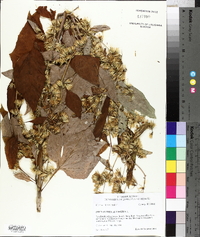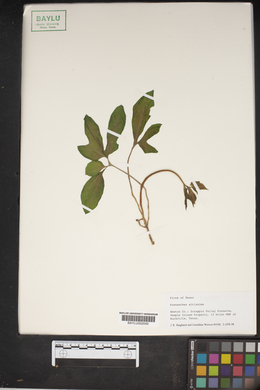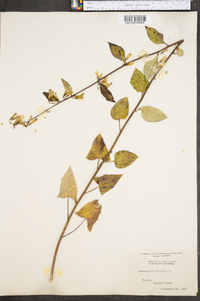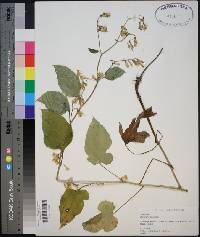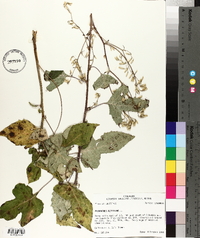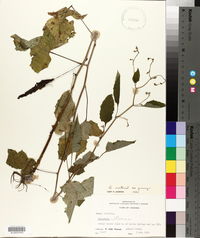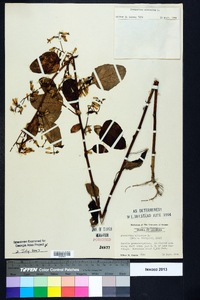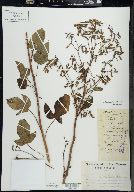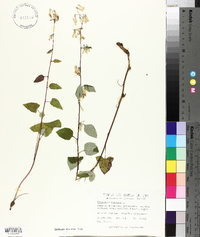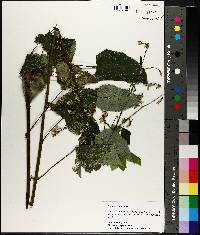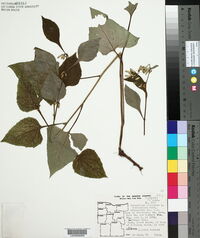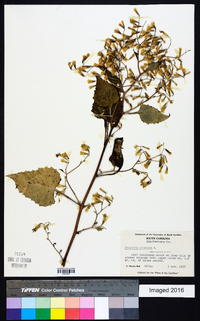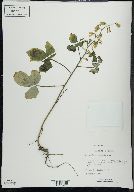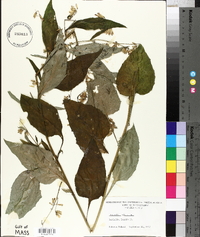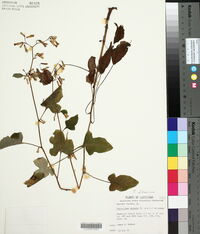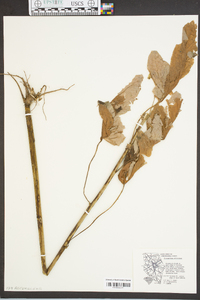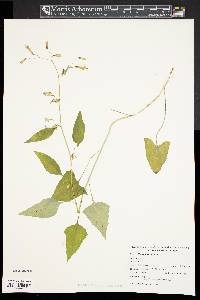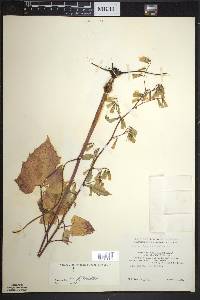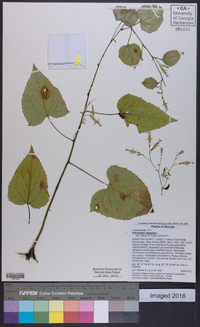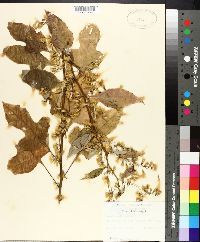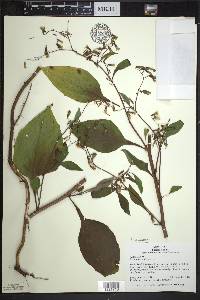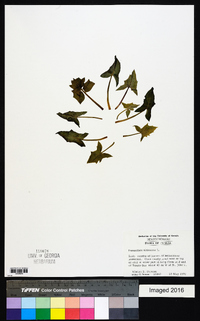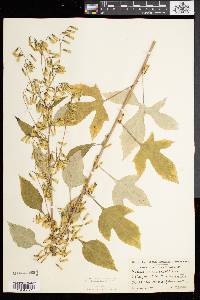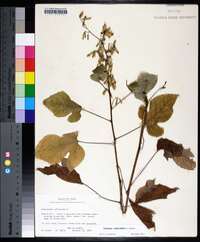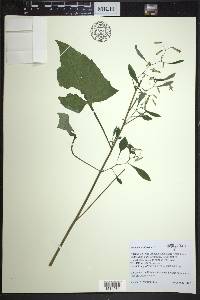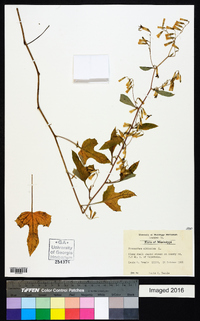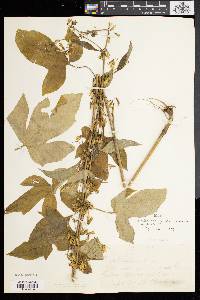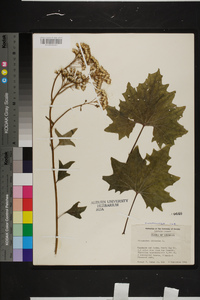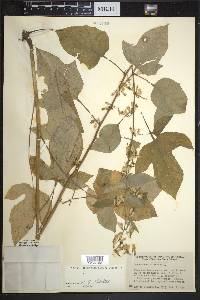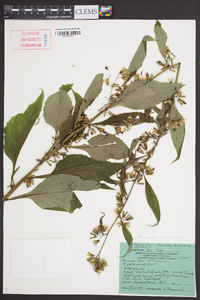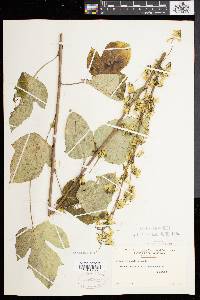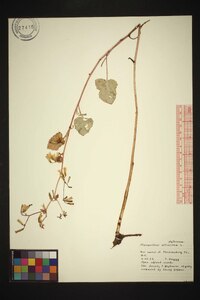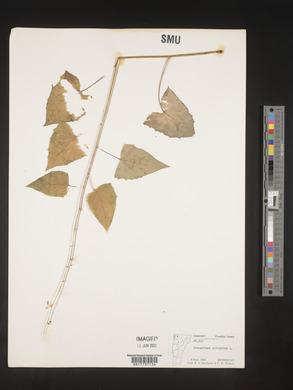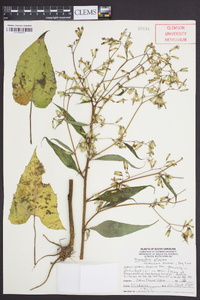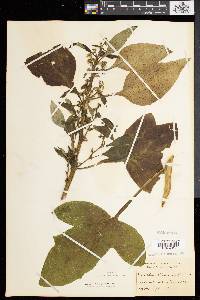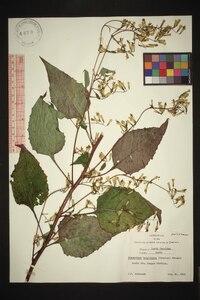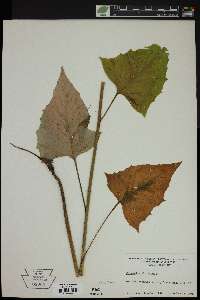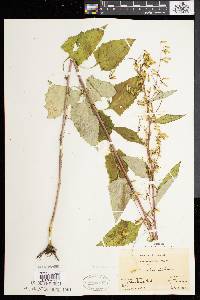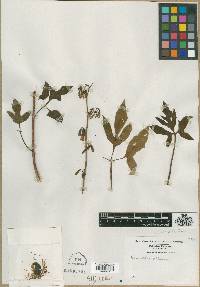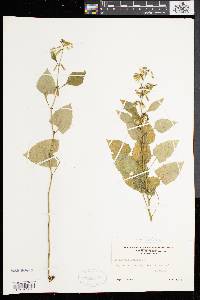
|
|
|
|
Family: Asteraceae
Tall Rattlesnake-Root, more...tall rattlesnakeroot
[Nabalus altissima (L.) Hook., morePrenanthes altissima Pall., Prenanthes altissima var. altissima , Prenanthes altissima var. cinnamomea Fernald, Prenanthes altissima var. hispidula Fern.] |
Plants 40-250 cm; taproots thickened, knotty, tuberous. Stems erect, greenish to purplish, glabrous proximally, often tomentulose distally. Leaves: proximal present at flowering; petioles winged; blades usually ovate or triangular, 4-15 × 2-16 cm, thin, bases truncate to hastate or cordate, margins entire or shallowly dentate, often deeply 3-lobed, faces glabrous or with scattered hairs on veins; distal reduced in size and lobing. Heads in narrow or spreading, paniculiform arrays. Involucres cylindric, 9-14 × 2-3 mm. Calyculi of 4-6, blackish, triangular bractlets 1-4 mm, glabrous. Phyllaries (4-)5(-6), pale green, often blackish at bases and apices, linear to lanceolate, 10-12 mm, glabrous or sparsely hairy. Florets (4-)5(-6). corollas pale yellow to greenish yellow, 7-15 mm. Cypselae brown to tan, subcylindric, subterete, 4-5 mm, indistinctly 5-10-ribbed; pappi usually whitish or pale yellow, sometimes reddish brown, 5-6 mm. 2n = 16. Flowering Aug-Nov. Open deciduous hardwood or mixed woods, shaded slopes, bluffs, disturbed areas, roadsides; 50-800 m; N.B., N.S., Ont., P.E.I., Que.; Ala., Ark., Conn., Del., Ga., Ill., Ind., Ky., La., Maine, Md., Mass., Mich., Mo., N.H., N.J., N.Y., N.C., Ohio, Okla., Pa., R.I., S.C., Tenn., Tex., Vt., Va., W.Va. Prenanthes altissima is recognized by its narrow involucres with 5 pale green, glabrous phyllaries, (4-)5(-6) florets, and pale yellow to greenish yellow corollas. Pappi in this species are most commonly whitish or pale yellow. Specimens with reddish brown to orange pappi have been recognized as var. cinnamomea, found in Arkansas, Louisiana, and Missouri. Specimens with densely hairy stems and pale yellow pappi have been recognized as var. hispidula, found mostly in New York, New England, and adjacent Canada.
Stem 4-20 dm, glabrous or often spreading-hirsute toward the base; lvs thin, glabrous above, often hirsute on the midrib and main veins beneath, the lower long- petioled, highly variable in size and shape, commonly with deltoid to sagittate or cordate, merely mucronate-toothed blade 4-15 נ2.5-16 cm, or sometimes deeply few-lobed, gradually reduced upward, becoming short-petiolate or subsessile and elliptic; infl elongate-paniculiform; heads nodding; invol glabrous, 9-14 mm, with (4)5(6) principal bracts, generally dark-tipped; fls 5-6, ochroleucous or chloroleucous; 2n=16. Woods; Nf. to Ga., w. to Mich., Mo., Ark., and La. Aug., Sept. Most of our plants are var. altissima, with whitish to pale brown pappus. Southwestward this passes into var. cinnamomea Fernald, chiefly of Mo., Ark., and La., with bright yellow-brown or almost orange pappus. Gleason, Henry A. & Cronquist, Arthur J. 1991. Manual of vascular plants of northeastern United States and adjacent Canada. lxxv + 910 pp. ©The New York Botanical Garden. All rights reserved. Used by permission. From Flora of Indiana (1940) by Charles C. Deam Doubtless formerly found in every county of the state. It is a woodland plant, preferring dry soil, and found principally in oak woods and less frequently in beech and maple woods. The great variation in the shape of the leaves of this species and the two following has led to the naming of several varieties, none of which I consider worthy of a name. I have found the most diverse forms in the same colony. The blades may be undivided, merely dentate; parted with the divisions not stalked, divided into three parts with the two lateral ones stalked and often deeply parted or deeply lobed, cordate or cuneate at the base, and there are many intermediate forms. The pappus of the species varies somewhat in color but no plants have been found with a white or even of a sordid color. It is to be noted that the pappus does not acquire its characteristic color until it is mature. Fernald described a variety of this species with cinnamon brown pappus and cited Indiana within its range. In none of our specimens is the pappus as dark as Cinnamon-Brown of Ridgway's Standard. …… Indiana Coefficient of Conservatism: C = 5 Wetland Indicator Status: FACU |
|
|
|
This project was made possible in part by the Institute of Museum and Library Services [MG-70-19-0057-19].
Powered by Symbiota

